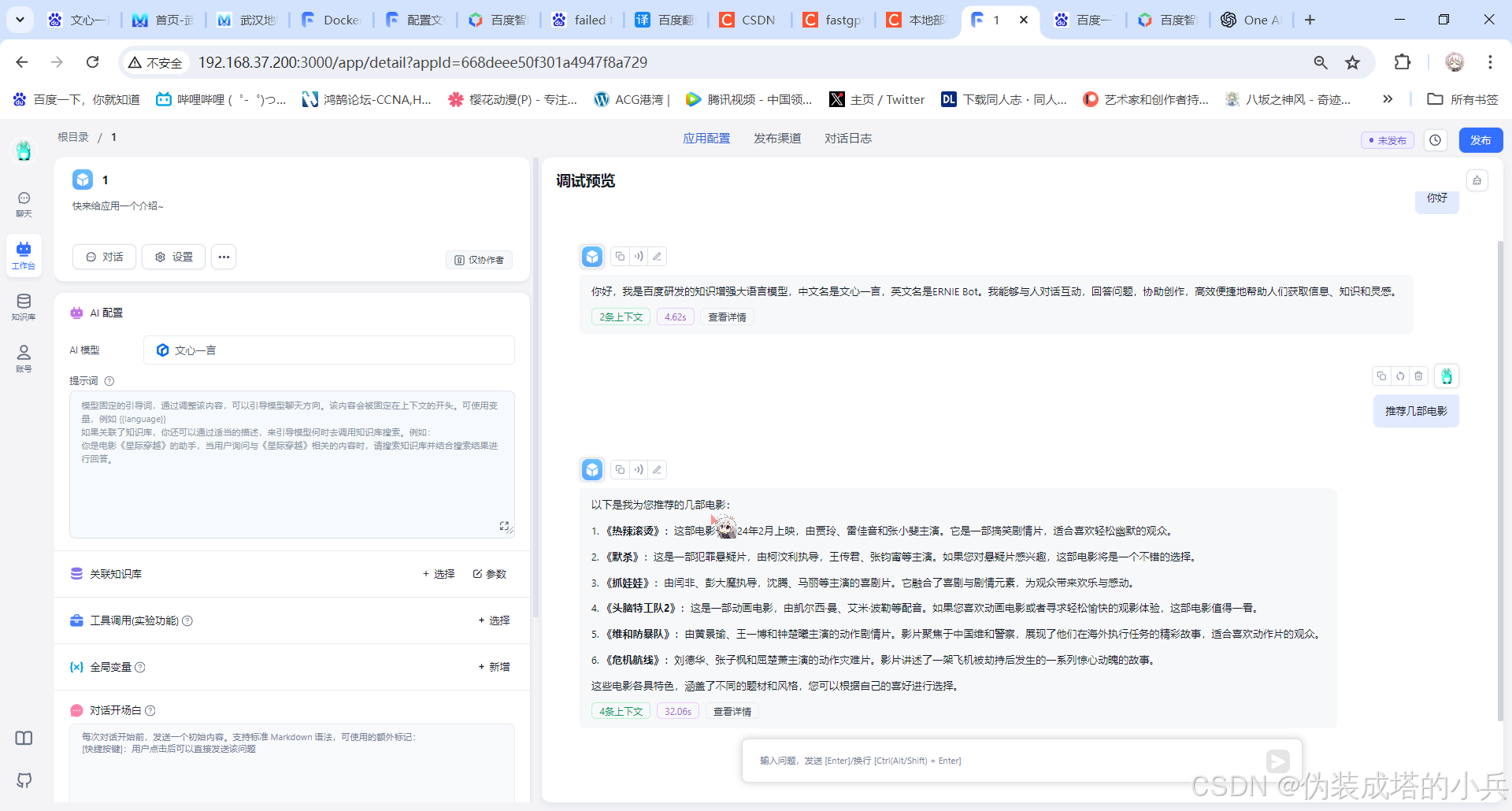AssetBundle
AssetBundle的定义与使用
AssetBundle是一个压缩包包含模型、贴图、预制体、声音、甚至是整个场景,可以在游戏运行的时候被加载
AssetBundle自身保存着相互的依赖关系
压缩包可以使用LZMA和LZ4压缩算法,减少包大小,更快的进行网络传输
把一些可以下载内容AssetBundle里面,可以减少安装包的大小
什么是AssetBundle
是一个存在硬盘上的文件,可以称之为压缩包,这个压缩包可以认为是一个文件夹,里面包含了多个文件。这些文件分为两类:serialized file 和 resource files(序列化文件和源文件)
serialized file:资源被打碎放在一个对象中,最后统一被写进一个单独的文件(只有一个)
resource file:某些二进制资源(图片、声音)被单独保存,方便快速加载
是一个AssetBundle对象,可以通过代码从一个特定的压缩包加载出来的对象。这个对象包含了所有当初添加到这个压缩包里面的内容,可以通过这个对象加载出来使用
AssetBundle使用流程图


AssetBundle使用流程(AB)
指定资源的AssetBundle属性(xxxa/xxx)这里xxxa会生成目录,名字为xxx
构建AssetBundle包
上传AB包
加载AB包和包里面的资源
利用代码打包示例
using System.IO;
using UnityEditor;
public class CreateAssetBundles
{
[MenuItem("Assets/Build AssetBundles")]
static void BuildAllAssetBundles()
{
string dir = "AssetBundles";
if (!Directory.Exists(dir))
{
Directory.CreateDirectory(dir);
}
BuildPipeline.BuildAssetBundles(dir, BuildAssetBundleOptions.None, BuildTarget.StandaloneWindows64);
}
}
利用代码加载本地AB包示例
using UnityEngine;
public class LoadFromFileExp : MonoBehaviour
{
private void Start()
{
AssetBundle ab = AssetBundle.LoadFromFile("AssetBundles/wall.unity3d");
GameObject obj = ab.LoadAsset<GameObject>("wall");
Instantiate(obj);
}
}
AssetBundle 分组策略(仅供参考)
逻辑实体分组
一个UI界面或者所有UI界面一个包(这个界面里面的贴图和布局信息一个包)
一个角色或者所有角色一个包(这个角色里面的模型和动画一个包)
所有的场景所共享的部分一个包(包括贴图和模型)
按照类型分组
所有声音资源打成一个包,所有Shader打成一个包,所有模型打成一个包,所有材质打成一个包
按照使用分组
把在某一时间内使用的所有资源打成一个包。可以按照关卡分,一个关卡所需要的所有资源包括角色、贴图、声音等打成一个包。也可以按照场景分,一个场景所需要的资源一个包
AssetBundle 分组策略——总结
把经常更新的资源放在一个单独的包里面,跟不经常更新的包分离
把需要同时加载的资源放在一个包里面
可以把其他包共享的资源放在一个单独的包里面
把一些需要同时加载的小资源打包成一个包
如果对于同一个资源有两个版本,可以考虑通过后缀来区分:比如 unity3dv1、unity3dv2
依赖打包

打包选项(AssetBundle压缩方式)
Build的路径(随意只要是在硬盘上都可以的)
BuildAssetBundleOptions
BuildAssetBundleOptions.None:使用LZMA算法压缩,压缩的包更小,但是加载的时间更长。使用之前需要整体解压。一旦被解压,这个包会使用LZ4重新压缩。使用资源的时候不需要整体解压。在下载的时候可以使用LZMA算法,一旦他被下载了之后,它会使用LZ4算法保存到本地上
BuildAssetBundleOptions.UncompressedAssetBundle:不压缩,包大,加载快
BuildAssetBundleOptions.ChunkBasedCompression:使用LZ4压缩,压缩率没有LZMA高,但是可以加载指定资源而不用解压全部
使用LZ4压缩,可以获得可以跟不压缩相媲美的加载速度,而且比不压缩文件更小
BuildTarget
选择build出来的AB包要使用的平台

从内存中加载 AssetBundle
IEnumerator Start()
{
AssetBundleCreateRequest ab = AssetBundle.LoadFromMemoryAsync(File.ReadAllBytes("AssetBundles/wall1.unity3d"));
yield return ab;
AssetBundle asb = ab.assetBundle;
GameObject obj = asb.LoadAsset<GameObject>("wall1");
Instantiate(obj);
}
从本地加载 AssetBundle
IEnumerator Start()
{
AssetBundleCreateRequest ab = AssetBundle.LoadFromFileAsync("AssetBundles/wall1.unity3d");
yield return ab;
AssetBundle asb = ab.assetBundle;
GameObject obj = asb.LoadAsset<GameObject>("wall1");
Instantiate(obj);
}
使用 WWW.LoadFromCacheOrDownload 下载并加载 AssetBundle
IEnumerator Start()
{
while (!Caching.ready)
{
yield return null;
}
WWW www = WWW.LoadFromCacheOrDownload(@"E:\Work\Work2\AssetBundleTest\\AssetBundles\wall1.unity3d", 1);
yield return www;
if(!string.IsNullOrEmpty(www.error))
{
Debug.LogError(www.error);
yield break;
}
AssetBundle asb = www.assetBundle;
GameObject obj = asb.LoadAsset<GameObject>("wall1");
Instantiate(obj);
}
从服务器端下载 AssetBundle
IEnumerator Start()
{
while (!Caching.ready)
{
yield return null;
}
WWW www = WWW.LoadFromCacheOrDownload(@"http://localhost/AssetBundles/wall1.unity3d", 1);
yield return www;
if(!string.IsNullOrEmpty(www.error))
{
Debug.LogError(www.error);
yield break;
}
AssetBundle asb = www.assetBundle;
GameObject obj = asb.LoadAsset<GameObject>("wall1");
Instantiate(obj);
}
使用 UnityWebRequest 来加载 AssetBundle
IEnumerator Start()
{
string uri = @"file:///E:\Work\Work2\AssetBundleTest\\AssetBundles\wall1.unity3d";
UnityWebRequest uwr = UnityWebRequestAssetBundle.GetAssetBundle(uri);
yield return uwr.SendWebRequest();
AssetBundle ab = DownloadHandlerAssetBundle.GetContent(uwr);
GameObject obj = ab.LoadAsset<GameObject>("wall1");
Instantiate(obj);
}
加载 Manifest
IEnumerator Start()
{
string uri = @"file:///E:\Work\Work2\AssetBundleTest\\AssetBundles\wall1.unity3d";
UnityWebRequest uwr = UnityWebRequestAssetBundle.GetAssetBundle(uri);
yield return uwr.SendWebRequest();
AssetBundle ab = DownloadHandlerAssetBundle.GetContent(uwr);
GameObject obj = ab.LoadAsset<GameObject>("wall1");
Instantiate(obj);
AssetBundle manifestAb = AssetBundle.LoadFromFile("AssetBundles/AssetBundles");
AssetBundleManifest manifest = manifestAb.LoadAsset<AssetBundleManifest>("AssetBundleManifest");
foreach(var a in manifest.GetAllAssetBundles())
{
print(a);
}
string[] strs = manifest.GetAllDependencies("wall1.unity3d");
foreach(var a in strs)
{
print(a);
AssetBundle.LoadFromFile(@"AssetBundles/" + a);
}
}
AssetBundle 的卸载
卸载有两个方面:
减少内存使用
有可能导致丢失
AssetBundle.Unload(true):卸载所有资源,即使有资源被使用着
1.在关卡切换、场景切换
2.资源没被用的时候调用
AssetBundle.Unload(false):卸载所有没有被使用的资源
个别资源的卸载:
1.通过Resource.UnloadUnusedAssets
2.场景切换的时候自动卸载



















